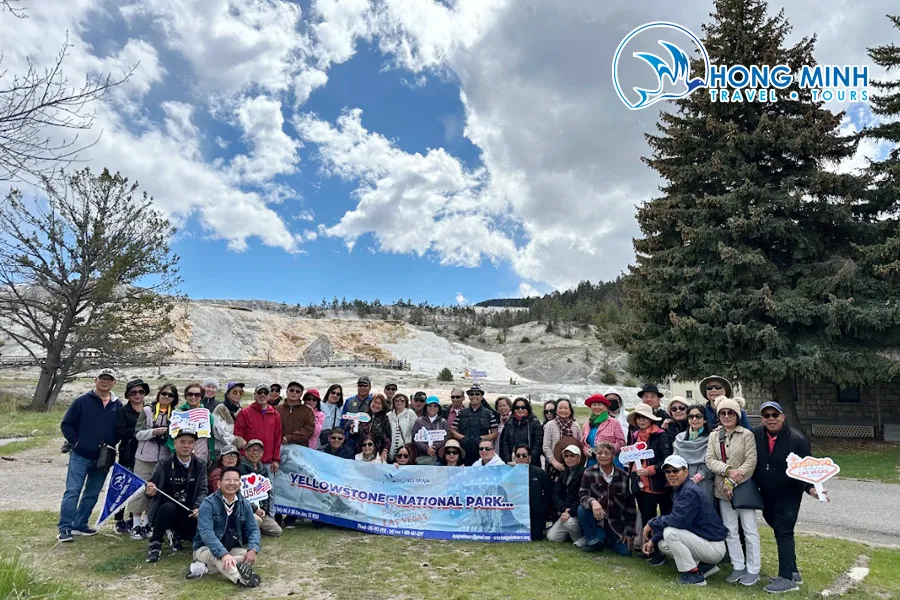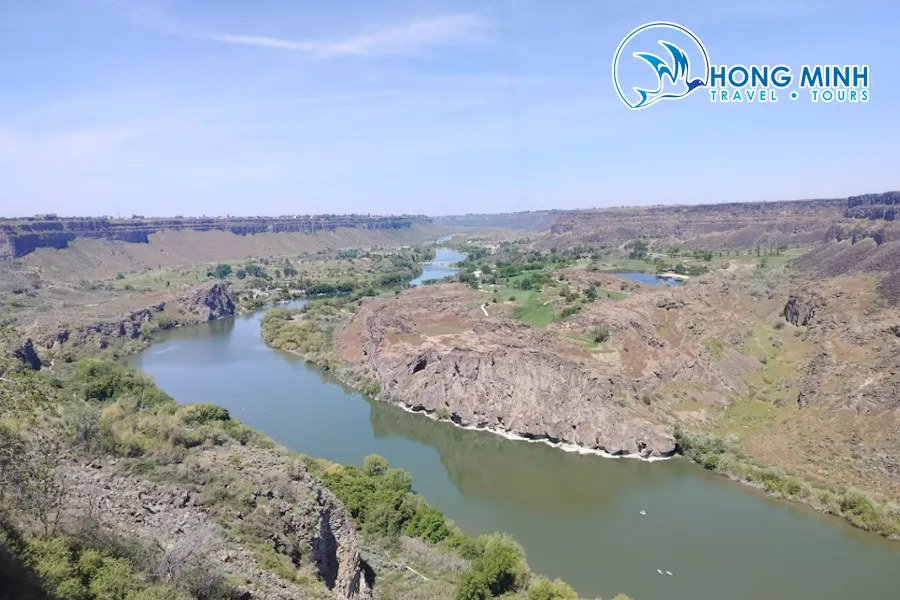Wyoming, the mountainous western state of the United States, is renowned for its majestic Yellowstone National Park and the iconic Mount Rushmore. However, it holds another hidden gem: the mesmerizing Aurora Borealis, or Northern Lights. If you are a photography enthusiast eager to witness and capture the colorful ribbons dancing across the night sky, Wyoming is your next ideal destination for an unforgettable aurora hunting adventure.
Wyoming: A Secret Gem for Aurora Chasers
With its vast wilderness and pristine night skies, minimally impacted by light pollution, Wyoming is rapidly becoming one of the most attractive aurora viewing locations in the United States. Unlike Alaska or Northern Europe, which are already popular aurora destinations, Wyoming offers a unique and more tranquil aurora hunting experience. It is not only a haven for nature lovers but also a perfect “film set” for photographers aiming to capture the magical moments of the universe.
Why Wyoming is Ideal for Aurora Photography
- Favorable Geographic Location: Situated at a relatively high mid-latitude, Wyoming frequently falls within the auroral oval, especially during periods of heightened solar activity.
- Dark Night Skies: With a low population density and extensive wilderness areas, Wyoming boasts some of the darkest night skies in the United States. This provides ideal conditions for observing and photographing the aurora. The absence of light pollution makes even faint auroral displays appear vivid and striking in photographs.
- Magnificent Natural Landscapes: Wyoming offers not only auroras but also stunning natural scenery including mountains, canyons, grasslands, and unique geological formations. The combination of the aurora and Wyoming’s landscapes creates unparalleled photographic opportunities, allowing you to capture truly unique and personal images.
- Fewer Tourists: Compared to other famous aurora destinations, Wyoming retains its unspoiled and peaceful atmosphere. This provides you with more privacy to fully enjoy the beauty of the aurora and focus on creating unique photographs.
Prime Locations for Aurora Hunting in Wyoming
Wyoming offers numerous incredible spots for aurora viewing and photography. Here are a few suggestions:
- Yellowstone National Park: America’s first national park is not only famous for geysers and wildlife but also an excellent location for aurora hunting. Seek out areas with minimal light pollution such as Yellowstone Lake, Hayden Valley, or the Mammoth Hot Springs area for the best views.

- Grand Teton National Park: Located just south of Yellowstone, Grand Teton is another fantastic choice. The majestic Teton Range reflecting the aurora’s light on Jenny Lake or Jackson Lake will create breathtaking compositions.
- Devil’s Tower National Monument: Devil’s Tower, a towering rock formation rising from the vast plains, provides a unique backdrop for aurora photographs. Find a location with an unobstructed view to the north to encompass the entire sky.

- Bighorn National Forest: Bighorn National Forest, with its winding trails and elevated viewpoints, is a perfect place to immerse yourself in nature and await the aurora’s appearance.
- Fremont Lake & Pinedale: The Fremont Lake and Pinedale area in western Wyoming offers exceptionally dark night skies with minimal light pollution, making it an ideal destination for serious aurora photographers.
Best Time to See the Northern Lights in Wyoming
The aurora hunting season in Wyoming typically extends from late September to early April. This period offers long nights, dark skies, and generally more stable weather.
- December to February: This is winter in Wyoming, with the longest nights and often clear skies. However, temperatures can plummet, requiring thorough preparation for extreme cold.
- September, October, March, and April: The weather is milder, not excessively cold, while still offering good chances to see beautiful auroras. This might be a suitable option for those not accustomed to harsh winter conditions.
Time of Night: Auroras are usually strongest between 10 PM and 2 AM. However, it is advisable to monitor aurora forecasts and patiently wait, as this phenomenon can appear at any time during dark hours.
Weather Conditions: A truly clear, cloudless sky is essential for aurora viewing. Check weather forecasts before heading out and choose nights with clear skies.
Pro Tips for Aurora Photography in Wyoming
To capture impressive aurora photographs in Wyoming, thorough preparation regarding equipment and skills is crucial:
- Camera: A DSLR or mirrorless camera with good low-light performance and a wide-angle lens with a large aperture (f/2.8 or wider).
- Lens: A wide-angle lens (14mm – 24mm) helps capture the expansive night sky and aurora.
- Tripod: A sturdy tripod is indispensable for long exposures without camera shake.
- Remote Shutter Release or Timer: Helps minimize camera shake when shooting.
- Spare Batteries: Cold weather can drain camera batteries quickly, so bring extra batteries.
- Headlamp or Flashlight: A headlamp or flashlight aids in navigating in the dark and adjusting camera settings. A red light flashlight will help your eyes adapt to darkness faster.
- Compass or GPS App: Helps you determine North, the direction where auroras are most likely to appear.
Camera Settings:
- Manual (M) Mode: Allows complete control over settings.
- Aperture: Open as wide as possible (f/2.8, f/1.8, or f/1.4 depending on your lens).
- ISO: Start at ISO 1600 or 3200 and adjust based on aurora brightness. You might increase to 6400 or higher if the aurora is faint.
- Shutter Speed: Experiment from 10 seconds to 30 seconds. Slower speeds gather more light but might blur rapid aurora movements.
- Focus: Switch to Manual Focus and focus to infinity. Use Live View and zoom in to check star sharpness.
- RAW Format: Shoot in RAW format for better post-processing flexibility.
Composition Tips:
- Incorporate Foreground: Look for interesting foreground elements like mountains, trees, lakes, or unique architecture to add depth and appeal to your photos. Devil’s Tower or Snake River Canyon are excellent suggestions.

- Rule of Thirds: Apply the rule of thirds for balanced and harmonious composition. Position the horizon and foreground elements along the 1/3 lines of the frame.
- Shoot Wide and Close-Up: Capture both wide-angle shots to showcase the aurora’s grandeur over the Wyoming sky and close-up shots to focus on the aurora’s details and colors.
Helpful Advice for Your Wyoming Aurora Trip
- Check Aurora Forecasts: Before aurora hunting, check websites or apps providing aurora forecasts to assess the probability and intensity of auroral activity. Useful apps include Aurora Forecast and SpaceWeatherLive.
- Dress Warmly: Night temperatures in Wyoming can be very low, especially in winter. Dress in layers, including thermal wear, a thick jacket, hat, gloves, and warm socks.
- Research Locations: Research your chosen aurora hunting locations beforehand, noting routes, safe stopping points, and nearby amenities.
- Go with Friends or Experienced Individuals: Aurora hunting at night in wilderness areas can carry some risks. Going with friends or experienced individuals is safer and more enjoyable.
- Be Patient: The aurora is a natural phenomenon and unpredictable. You might wait for hours in the dark before seeing it. Be patient and enjoy the waiting process; luck might smile upon you.
- Respect Nature: While aurora hunting, maintain environmental cleanliness, avoid loud noises, and do not disturb wildlife.
Wyoming, with its untouched beauty and magical night skies, awaits your exploration and the capture of unique aurora moments. Prepare your gear and embark on a journey to conquer the Wyoming night sky—you will not be disappointed!